The Garmin Edge 1030 is the flagship GPS cycling computer from the biggest name in the business.
Bursting with features and connectivity, the Edge 1030 replaced the Edge 1000, bringing the top-of-the-range device in line with the Edge 820’s clean, modern aesthetic. Multiple BikeRadar testers have been using the 1030 over the last few months and we’re ready to issue a final verdict…
- Top 5 GPS cycling computers
- Garmin Edge 820 review
- Garmin Edge bike computers: buyer’s guide to all the models
- Wahoo vs Garmin: which bike computer should you choose?
Garmin Edge 1030 specs and key features
- Monitors and records every cycling metric you can think of, plus a few more
- Up to 20 hours of battery life plus another 20 with optional Garmin Charge external battery
- Improved out-front mount places device flush with bar, accepts accessories including Garmin Varia lights, Garmin Charge
- Trendline popularity routing uses Garmin Connect data to choose routes (but doesn’t do the best job)
- 3.5in colour touchscreen works with (some) gloves, and in the rain
- Pairs with iOS and Android smartphones via Bluetooth for easy transfer of data, extra functionality
- Rider-to-rider and rider-to-phone messaging, using pre-canned notes
- WiFi connectivity, plus the usual ANT+ and Bluetooth for external sensors
- Improved maps, with turn-by-turn navigation and alerts warning of sharp turns
- Enhanced Strava Live feature alerts rider to nearby segments
- Pre-loaded Strava Routes and TrainingPeaks Connect IQ apps, plus option to add more apps and ‘widgets’
- Weight: 123g (+47g for out-front mount including shim for 31.8mm bar)
- Dimensions: 59mm long x 114mm wide x 15mm thick (+3.5mm for protruding mount)
Garmin Edge 1030 first ride video
Unboxing the Garmin Edge 1030
The Edge 1030 ships with Garmin’s new flush out-front mount (with shims for 25.4mm and 31.8mm bars), two stem/handlebar mounts (with a choice of heights for the best fit) and a USB cable.
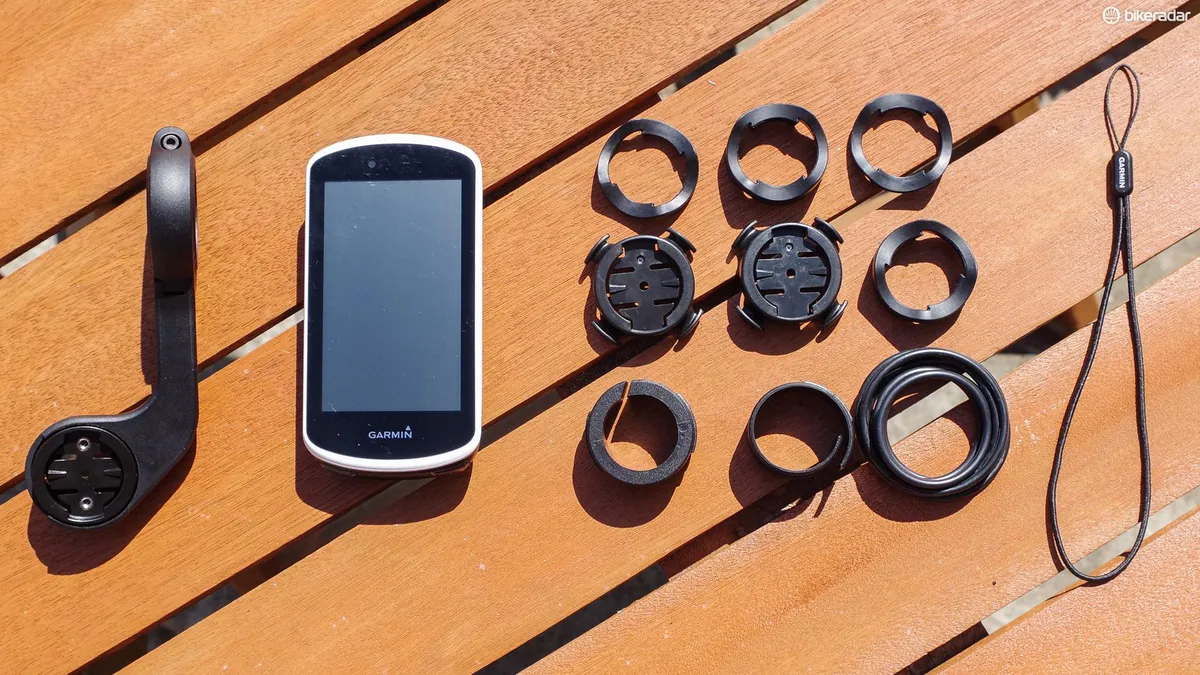
It’s also available as a bundle including heart rate and speed/cadence sensors.
The most noticeable feature of the Edge 1030 is the new 3.5in screen, which occupies most of the face of the device. Meanwhile, the lap and start/stop buttons have moved to the bottom (or front, depending on how you’re looking at it) of the unit along with the USB port, while the power button is in the same position on the left-hand side.
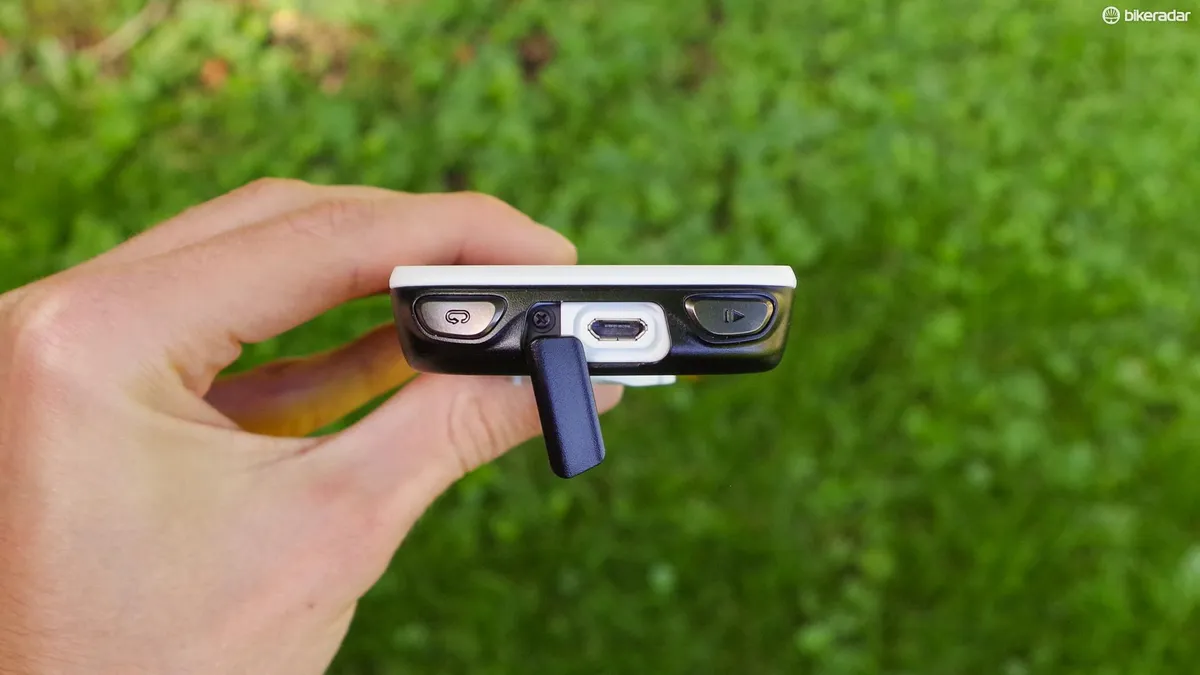
On the back, a removable panel hides a microSD card slot for expanded storage, and the signature Garmin twist-lock mount has gained contacts, which allow for a direct connection to the Charge external battery, without added cables. The Charge costs a surprisingly hefty £119.99 / $129.99 / €129.99 / AU$189, incidentally.
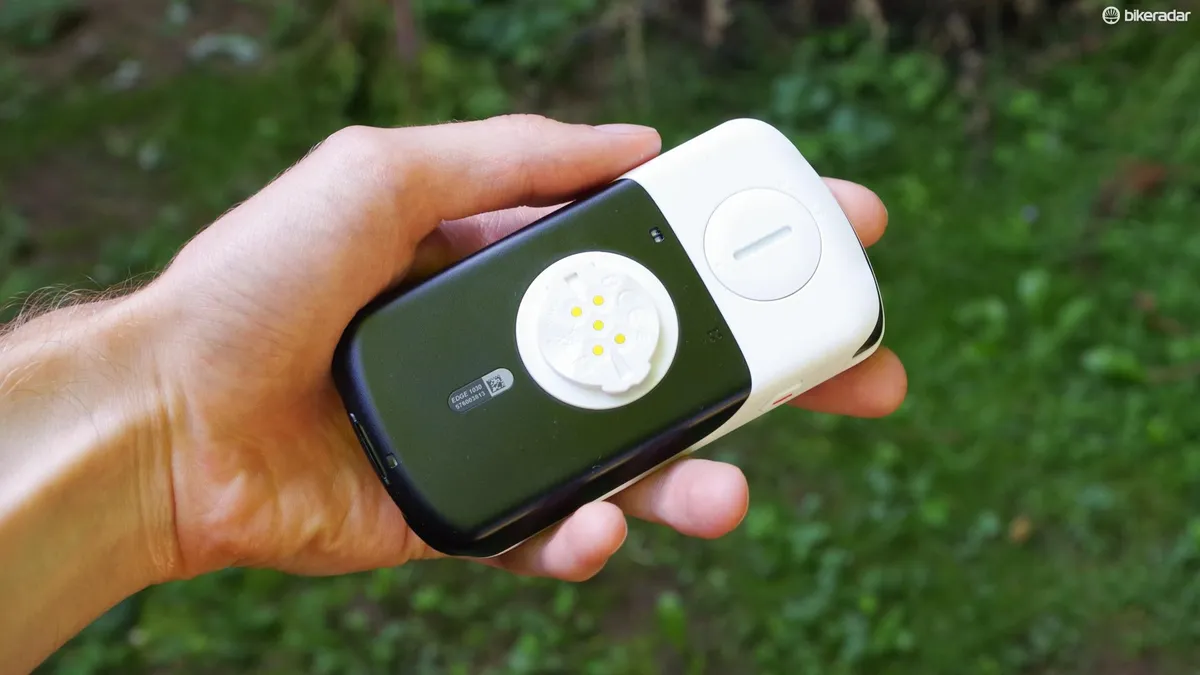
A thousand splendid features
With so much functionality on offer, it’s likely to take you some time to get your head around some of the 1030’s features.
The interface is fairly easy to navigate, but finding specific settings can be a bit of a head-scratcher at times as Garmin’s logic isn’t always intuitive.
To initiate a ride just select your preferred ‘Activity profile’ (if it isn’t already selected), and press the start button on the bottom of the device.
To switch between screens of data and/or maps, you swipe sideways, and to access ‘widgets’ (which include essential stuff such as settings, and various optional add-ons, weather, etc) you swipe down.
Slightly confusingly, some settings are under ‘Settings’, while others, including fairly basic stuff such as GPS mode, are under ‘Profile’ because they are actually profile-specific.
- Best GPS and smartwatches for cycling: how to choose the right one for you
- Best GPS devices for cycling
- Buyer's guide to GPS bike computers
When it comes to customising your Edge’s setup, the touchscreen is invaluable. On non-touchscreen Garmins, an operation as simple as adding a new data field can take what feels like a hundred button-presses.
The 1030 will display up to ten fields per page of data, and you can customise to your heart’s content, adding or taking away pages and fields to create your dream display.
Layouts are profile-specific, and by default, there are Road, Mountain, and Indoor options. There’s nothing to stop you creating your own, of course.
For example, you might want a more stripped-down data display for races, with only power and distance on show, whereas touring would demand a different set of metrics.
Navigation with the Garmin Edge 1030
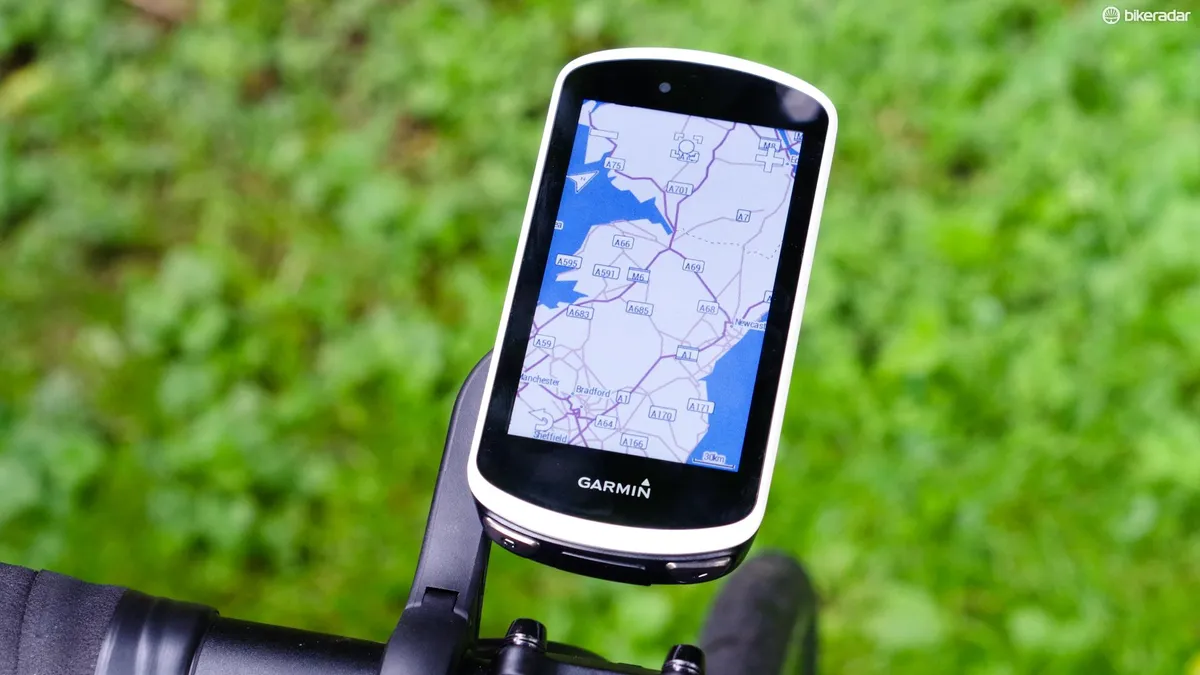
Navigation with the Edge 1030 is about as advanced as you can get on a dedicated bike computer, with detailed maps, proper turn-by-turn instructions and warnings for sharp bends.
You can load courses onto the 1030 or use the ‘Course creator’ to plan routes on the fly, letting the device suggest the best way to get between your chosen locations.
If you’re a real free spirit, selecting ‘Round-trip course’, a compass direction and an approximate distance will generate a selection of routes for you to try.
The new Trendline ‘Popularity’ routing should, in theory, mean it’s an improvement over the Edge 820’s version, which didn’t always produce the best results.

In practice, the quality of results seems quite low. For example, if you ask the device to suggest routes into Bristol it offers heavily trafficked main roads favoured only by masochists.
It may be that the algorithm being used needs work, or perhaps it is being skewed excessively by people commuting on major routes. The most-used road is not necessarily the one you’d prefer to cycle along for leisure, after all.
As a piece of packaging, the Edge 1030 is as slick and accomplished as I’d expect from Garmin
In general, planning routes on the 1030 is clunky and time consuming compared to firing up Google Maps on your phone.
Typing on the non-QWERTY virtual keyboard is cumbersome, and you can’t just fire search terms or postcodes (zip codes) in and immediately get what you want as you would on your phone — you need to scroll through a list of ‘POIs' (e.g. ‘food and drink’, ‘shopping’), enter specific locations in a series of frustrating steps, or browse the map for relevant symbols.
In this respect, the Edge 1030 doesn’t offer much improvement over the 1000.
Connecting all the things
Connectivity is a huge part of the Edge 1030 package. In addition to ANT+ sensors, the 1030 will connect to WiFi for data transfer purposes, and pairing with a smartphone using Bluetooth unlocks a wealth of features.
LiveTrack, Grouptrack and Incident Detection are carry-overs from the Edge 820, while rider-to-rider messaging is new.
But this last feature seems like a bit of a gimmick. You can send canned replies to texts such as 'Out riding. Sent from my Garmin Edge 1030', but there’s no option to compose your own messages, and you can’t initiate a Garmin-to-phone conversation yourself. Garmin-to-Garmin messaging only works if you’re both in the same GroupTrack session. That signature on messages can be disabled incidentally…
Strava Premium users will benefit from the latest version of Strava Live, which offers second-by-second, real-time comparisons with personal bests as you’re riding segments.
You can also install third-party apps from the Garmin Connect IQ store, including some cool stuff such as custom tachometer-style readouts for heart rate, power etc.
Uploading rides to Garmin Connect is a seamless activity that happens in the blink of an eye.
With Strava syncing enabled, there’s minimum fuss, although you’ll have to go in and make manual edits if you want to change ride attributes, such as choice of bike.
In the wild — great battery life, so-so display
As a piece of packaging, the Edge 1030 is as slick and accomplished as I’d expect from Garmin. It looks good, feels solidly constructed, and it comes with a really nice mount.
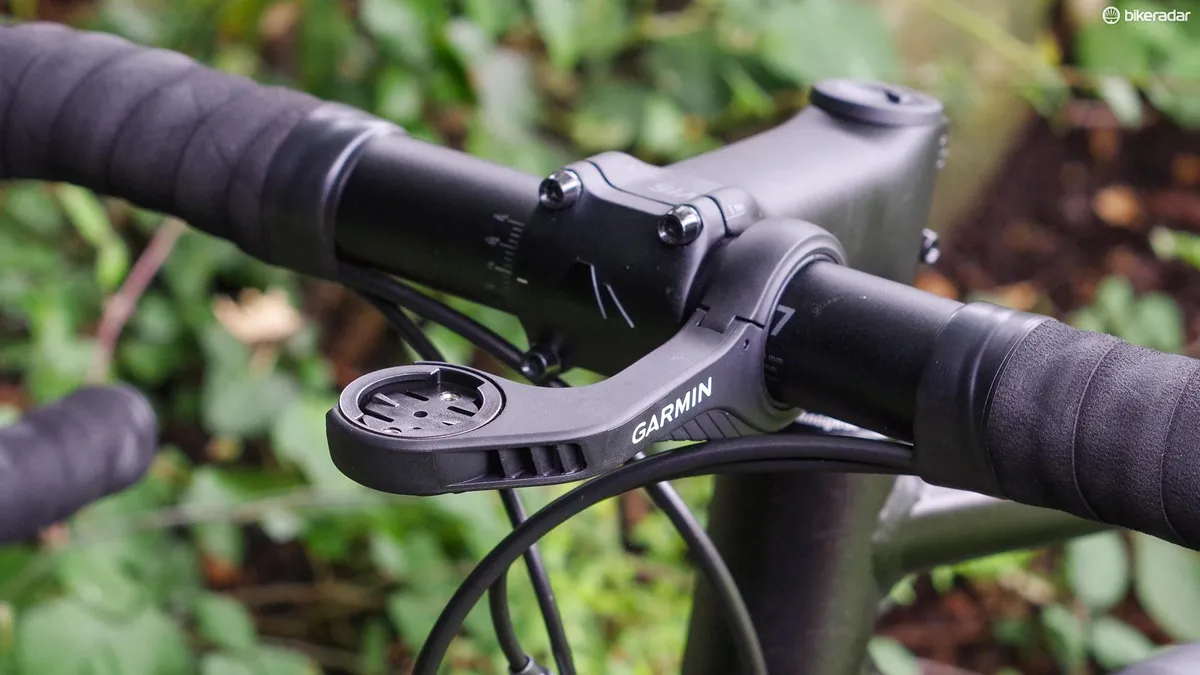
The increase in battery capacity from the Edge 1000’s 1100mAh to 1900mAh is a big step up, even with a bigger screen. Our testers have found battery life near the claimed 20 hours to be achievable but, as ever, the features you activate and the amount of screen-on time play a big part here, so there’s no hard and fast rule about how long it’ll last.
Our biggest bugbear with the Edge 1030 is its screen, which is adequate rather than impressive. At 100 percent it’s not that bright, and while it does a passable job when you’re navigating through menus, it’s hit-and-miss on the bike.
Swiping to switch pages or access the widgets doesn’t always seem to register, and you have to be quite positive with your virtual button presses.
Garmin makes a point of saying the 1030 works in the wet and with gloves on, and while my colleague Ben Delaney has found the first claim to be true, my experiments with gloves have produced mixed results.
It isn’t as simple as saying thin gloves work better than thick ones — thick stitching on a thin glove seems to get in the way more than padding on a heavy winter glove. As the screen is capacitive, humidity and temperature may also be factors here.
In any case, I’ve not found screen responsiveness to be particularly consistent, and that means a quick touch of the display doesn’t always produce the desired result.
Garmin Edge 1030 verdict

The Edge 1030 is clearly a hugely capable device and in many respects it’s a logical progression from the Edge 1000.
It doesn’t seem like a great leap forward however, and some of our criticisms of the Edge 820 can also be levelled at the 1030.
It’s expensive, and while the touchscreen gets the job done, it performs poorly compared to even pretty basic modern smartphones.
That’s not to say a smartphone would be a better choice as a bike computer — there’s a lot to be said for dedicated devices, and phones eat their batteries largely because their displays are so demanding — but if you buy a 1030 expecting a modern smartphone-like experience, you’re going to be disappointed.
The Edge 1030 offers a great deal and if you want the huge list of features it offers, it’s pretty much the only option around, but it's some way short of perfection.
Edge 1030 vs. 1000 vs. 820
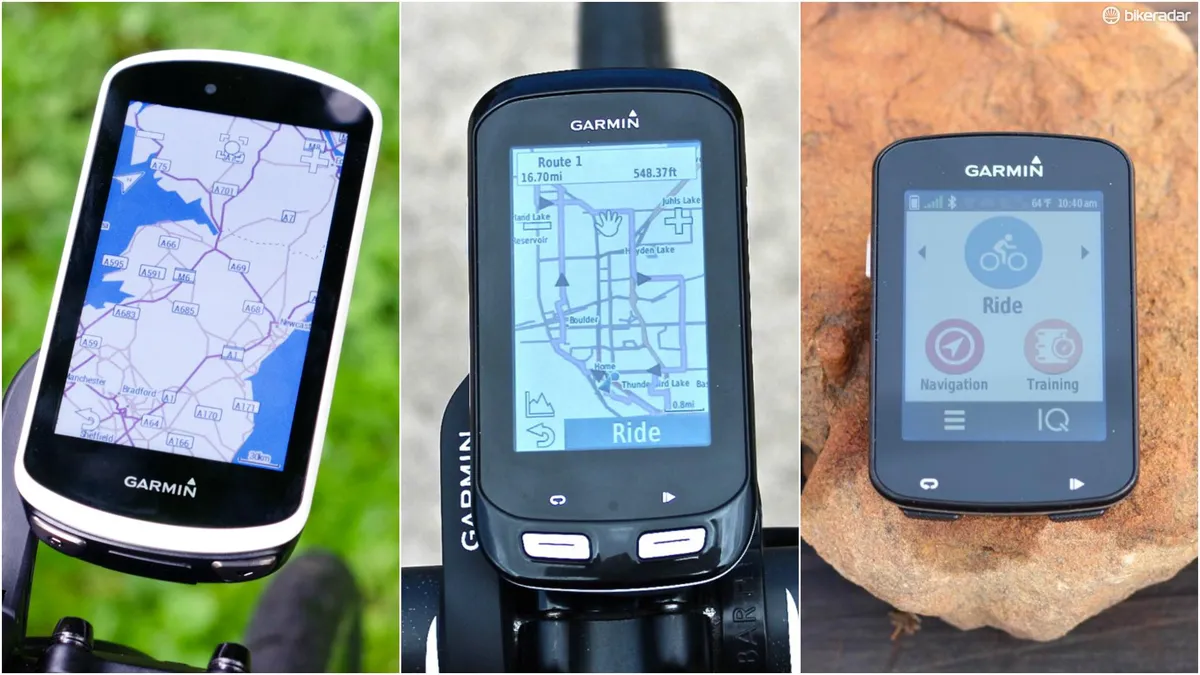
The big question for some of you will be whether the Edge 1030 justifies the £130 / $200 / €200 / AU$150 price-tag it carries over the Edge 820, and whether it’s a meaningful upgrade from the Edge 1000.
If you want the flagship device with every possible feature, then clearly it’ll have to be the 1030.
The big screen is better suited to interacting with maps, and the battery life is way better than the 820’s or the 1000’s.
At the same time, features such as Trendline and rider-to-rider messaging feel like a bit of a gimmick in their current form, and the 1030 is not without its frustrations.
If you’ve got an Edge 1000 already, the 1030 probably makes sense as an upgrade if you need more battery life, but it’s not a huge leap forward in other respects unless you just have to have the latest connectivity.
